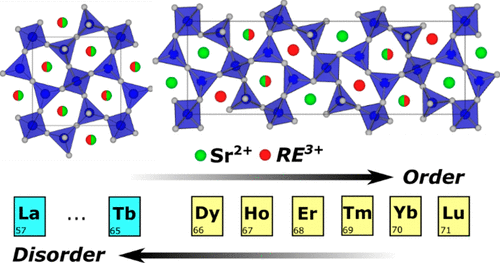Ask for a reprint
email :
* Give your email
2021
ACL
|
C.Genevois, H.Bazzaoui, M.Boyer, S.Ory, Y.Ledemi, Y.Messaddeq, M.J.Pitcher, M.Allix, 'Emergence of A-Site Cation Order in the Small Rare-Earth Melilites SrREGa3O7 (RE = Dy–Lu, Y)', Inorg. Chem. 60 12339-12354 (2021) doi:10.1021/acs.inorgchem.1c01565
SrREGa3O7 melilite ceramics with large rare-earth
elements (RE = La to Y) are famous materials especially known for
their luminescence properties. Using an innovative approach, the full
and congruent crystallization from glass process, SrREGa3O7
transparent polycrystalline ceramics with small rare earth elements
(RE = Dy−Lu and Y) have been successfully synthesized and
characterized. Interestingly, compared to the classic tetragonal
(P4̅21m) melilite structure composed of mixed Sr/RE cationic sites,
these compositions can crystallize in a 3 × 1 × 1 orthorhombic
(P21212) superstructure. A detailed study of the superstructure,
investigated using different techniques (synchrotron and neutron
powder diffraction, STEM-HAADF imaging, and EDS mapping),
highlights the existence of a Sr/RE cation ordering favored by a large Sr/RE size mismatch and a sufficiently small RE cation. An
appropriate control of the synthesis conditions through glass crystallization enables the formation of the desired polymorphs, either
ordered or disordered. The influence of this tailored cationic ordering/disordering on the RE luminescent spectroscopic properties
have been investigated. A stronger structuration of the RE emission band is observed in the ordered ceramic compared to the
disordered ceramic and the glass, whose band shapes are very similar, indicating that the RE environments in the glass and
disordered ceramic are close.
|

|